How to Clean Gold Jewelry So It Shines Like New

By Marilyn Syarto
Chunky resin rings and beaded jewelry may be Instagram-trendy, but elegant gold jewelry never goes out of style—especially important pieces like wedding rings and milestone gifts. The only thing you need to handle is learning how to clean gold jewelry so it keeps sparkling.
It’s possibly easier to clean gold than it is to clean silver jewelry—gold doesn’t tarnish as much or as easily as silver, according to Jeweler’s Mutual Group, a jewelry insurance company. Quality gold pieces can also last indefinitely if they are well cared for, and only a few rare acids or hot chlorine bleach can damage pure gold.
Our guide gives you the right cleaning methods for all types of gold jewelry so you can make your pieces shine.
Photo via Angela
Properties of Gold Jewelry
Gold is an extremely attractive material beloved by jewelry designers. Why? Gold has special physical properties that allow it to be crafted into wires, hammered into thin sheets, and cast into beautiful shapes. One of the reasons all of this is possible is that gold is a soft mineral that can be easily manipulated.
The gold industry is quite complex, and there are many types of gold. We’ll give you some definitions below when it comes to gold jewelry—it may help you decide which method you use to clean your gold.
Solid gold: Pure gold, also known as 24-karat or 24K, is a rich, warm yellow but it’s easily scratched and too soft for most jewelry. You’ll find most solid gold jewelry is stamped as 18-karat, 14-karat, or 10-karat gold, all of which have been mixed with other metals, or alloys, to give the piece its hardness and durability. By law, each type of gold must have a minimum of gold content in the piece:
- 18K Gold: must have 75 percent pure gold content
- 14K Gold: must have 58 percent pure gold content
- 10K Gold: must have 41 percent pure gold content
Gold-plated: This is the least expensive gold jewelry because a very thin (microscopic) layer of gold is adhered to a base metal such as brass. In fact, gold-plated jewelry has less than one percent gold content. This gold layer will quickly break down, tarnish, or rub off in a year, at best.
Gold-filled: This type of jewelry is made like a sandwich in that thin pieces of gold are bonded to both sides of a piece of copper. Gold-filled jewelry can last for a few decades if well-cared for.
Vermeil: You may not hear much about vermeil, but it’s a type of gold plating that uses sturdy and hypoallergenic sterling silver as the base metal. This type of jewelry may have a slightly thicker layer of gold than regular gold plating, but it is not as thick as a gold-filled piece, advises luxury jewelry designer Jen Oliak. She also notes that vermeil will likely fade in one to two years, which isn’t much better than the lifespan of regular gold-plated pieces.
Karats vs. Carats
Signs It’s Time to Clean Gold Jewelry
Over time, the buildup of body oils, lotions, perfumes, soaps, and general gunk in the air will dull the finish of any gold piece. You want to keep gold jewelry glistening, but you don’t want to overdo it or you’ll polish away the gold, especially if you have a gold-filled or gold-plated piece.
It’s best to clean jewelry every few months and if you prefer, take your best pieces that you wear daily into a jeweler for a professional cleaning once a year. Gently wipe down your pieces with a polishing cloth after wearing them to reduce the build-up of grime. In addition, use the following easy methods to clean gold jewelry with ingredients you already have in your kitchen.
Photo via Shutterstock
How to Clean Gold Jewelry With Dish Soap
This is the tried-and-true way of how to clean all types of gold jewelry at home. It’s simple, quick, and yields excellent results for gold jewelry with or without stones (including diamonds), eliminating the need to go to the jeweler for a professional cleaning.
If your piece of gold jewelry has a diamond or gemstone, use this recommended method of cleaning, but be aware that some gemstones, such as pearls, opals, and emeralds, are very soft or delicate. In addition, the adhesive keeping the stones in place needs to remain strong.
Tools and Materials Needed:
- Small bowl
- Liquid dish soap
- Warm water
- Soft baby-sized toothbrush
- Toothpick (optional)
- Soft microfiber towel or soft lint-free cloth
Step 1: Fill a Bowl
In a bowl, mix warm, but never boiling, water with a few drops of gentle liquid dish soap.
Step 2: Soak the Jewelry
Put one piece of jewelry in the bowl at a time for best results. Put the piece in the bowl, gently swish it around and leave for 10 to 15 minutes to soak. If your jewelry has a stone, do not let the piece soak for more than 15 minutes.
Step 3: Gently Scrub
Now that the dirt and grime have loosened, use a small soft toothbrush to gently remove more dirt from the grooves and crevices of the piece. If you see accumulated dirt in the prongs or in a crevice of the piece, ever so gently use a toothpick to softly scrape it out.
Step 4: Rinse and Dry
Hold the piece under the faucet and rinse with warm water. Shake and blow on the piece to remove droplets of excess water. Then dry the jewelry with a soft towel.
Close the Sink Drain!
How to Clean Gold Jewelry With Baking Soda and Salt
This method is a little bit more involved, and it’s recommended for 14K or 18K gold jewelry without any stones because of the abrasive ingredients used. This is not recommended for gold-filled or gold-plated jewelry, either. But the method, highly recommended by Jen Oliak, can be used to shine solid gold jewelry that has severely dulled.
Tools and Materials Needed:
- Small bowl
- Piece of aluminum foil
- 1 tablespoon of baking soda
- 1 tablespoon of salt
- 2 clean lint-free cloths
- Cup
- 1 cup of hot (not boiling) water
Step 1: Line Bowl
Line the inside of your bowl with a piece of aluminum foil.
Step 2: Add Dry Ingredients
Add salt and baking soda into the bowl with the foil. The coarseness of the salt will help to clear away dirt and the abrasiveness of the baking soda will also help to clean the gold.
Step 3: Heat and Add Water
In a separate cup, heat the water for two minutes in the microwave or until just before it begins to boil. Add the water to the bowl with the salt and baking soda.
Step 4: Add Jewelry
Place a piece of jewelry in the bowl and let it soak for 10 minutes.
Step 5: Remove and Wipe
Take the piece of jewelry out of the bowl and wipe it down with a soft lint-free cloth to remove the loosened grime.
Step 6: Rinse and Dry
Rinse the piece of jewelry under the faucet in the sink with warm water. Dry and buff with the second dry lint-free cloth or towel.
Photo via ConcordCottage.com with Lisa Walsh Huff Kroll
More Ways to Clean Gold Jewelry
We’re including a few quick tips and tricks (minus any crazy ones) we’ve accumulated along the way. If you have five minutes to spare and you have a piece of dirty gold jewelry, take advantage of these four safe and effective ideas.
- Rubbing alcohol: Dip greasy plain gold (no gemstones) jewelry into a glass with some rubbing alcohol to cut the grime. Rub with a clean soft cloth and dry.
- Seltzer: The bubbling action of seltzer or club soda (which contains salt) can safely lift dirt off of gold jewelry, even those with stones. Pour some seltzer into a bowl and add a couple of drops of gentle liquid dish detergent. Swish it around, put in the piece of jewelry, let sit for a few minutes, then remove the jewelry, rinse it under tap water, and buff dry with a clean, soft cloth.
- Windex: Use Windex glass cleaner only on solid gold, and only on diamonds—not any other gemstone. Pour a little Windex (dilute it if you prefer) into a small bowl, put in your piece of jewelry, soak for a minute or two, rinse under plain water, and buff dry.
- Ultrasonic cleaning: If you have a plain gold piece of jewelry (without stones), use an ultrasonic cleaning machine method sparingly. The machine cleans by causing high-frequency sound waves to agitate the liquid which, in turn, cleans the jewelry of tarnish and other dirt. Do not use this method on antique gold jewelry, however.
Ingredients to Avoid When Cleaning Gold Jewelry
We’ve already established that, while gold is quite a durable material, it’s still important to treat it with a careful touch. Despite what old wise tales may say, avoid these acidic ingredients when cleaning gold jewelry, which may cause discoloration or damage if not done correctly:
- Vinegar
- Ammonia
- Toothpaste
- Beer
- Denture tablets
- Alka Seltzer
- Ketchup
Tips and Hacks for Special Cases
Chemical, biological, and environmental factors can cause some funky things to happen to gold jewelry. Here are a few challenging situations with gold jewelry and what you can do about them:
- Gold turns black: Sweat, salt, and chlorine reacting with one another in the air can turn gold jewelry and the skin next to it black. Don’t panic! It’s just a chemical reaction with the gold alloy causing the discoloration, says Pav and Broome Fine Jewelry. To eliminate the problem, clean the gold piece as recommended above and remove it before engaging in any physical labor or when swimming in salt water, for example, to keep chemical reactions at bay.
- White gold turns yellow: White gold has an elegant, less shiny brightness to it, it’s of higher quality than sterling silver, and it won’t tarnish. But you’ll find that over time, white gold starts to turn yellow, which can be distressing after investing in the piece. It’s not a matter of cleaning at all. It’s a matter of taking the piece to a jeweler to be recoated with a white metal called rhodium that makes white gold look white.
- Accidental paint on gold: Whoops! You painted your home or got involved in a craft project without removing your jewelry and now you need to figure out a way to safely remove the paint from your gold. First, try the recommended cleaning methods above. If that doesn’t work, grab a cotton swab and a bottle of non-acetone nail polish remover. Dip the swab in the remover and rub on the paint to gently remove it from the gold. However, avoid using any type of nail polish remover on a piece of gold jewelry with a stone. If this doesn’t work or the paint spills onto the stone, take your jewelry to a professional for proper cleaning.
Photo via Shutterstock
Daily Gold Jewelry Care Reminders
Remember that gold—whether it’s 24K or gold-plated—can become damaged in just the right circumstances. Here are a few golden tips to keep your jewelry pristine:
- Remove when playing sports: Remove any type of gold jewelry if you are playing hard sports where your piece could get scratched or dented; remember that gold is soft!
- Remove when swimming: Take your gold jewelry, solid or otherwise, off before swimming or going into a spa environment; chlorine weakens gold’s structure and can cause it to break apart.
- Remove when cooking: Take off any gold, especially gold-plated rings, if you are preparing acidic food; the acids will damage the finish.
- Remove when doing DIY projects: Take your jewelry off while engaging in any DIY project that involves paint or glue—that includes painting a room!
- Remove when doing housekeeping chores: Don’t wear any type of gold jewelry while cleaning your home; bleach, abrasives, and acids can ruin the finish.
- Be careful with soaps and lotions: Watch for buildup of soap, perfume, hairspray, and lotions on all gold jewelry; all of these things can dull and dirty your gold.
- Avoid scratchy materials: Never use paper towels or tissues to dry any type of gold jewelry; they can scratch the finish.
- Separate pieces: Store all pieces of gold jewelry separately in a case and surrounded by soft material; tangled jewelry or pieces clunking together can scratch each other.
Have you ever saved a piece of your gold jewelry from becoming part of the jewelry junk pile? Please share how you did it with the Hometalk community!
Enjoyed the project?
Comments
Join the conversation
-
 DavianMooney
on Feb 03, 2024
DavianMooney
on Feb 03, 2024
Thanks for sharing it. I have a couple of earrings, which I thought I'd lost, but found them in the debris of drawers. Now, they look a bit dirty, and I'm thinking about how to clean them without ruining them.
-
-
 EllenWhitehead
on Feb 03, 2024
EllenWhitehead
on Feb 03, 2024
Thanks for sharing these tips on cleaning gold jewelry! It's essential to keep our precious pieces shining. Speaking of jewelry, I'm currently on the hunt for wedding bands, and I've got my eye on unisex wedding bands by Jaume Labro. They offer a unique and non-traditional vibe that I find intriguing. What's your take on unconventional wedding bands like these? If you're curious, here's the link: https://www.jaumelabro.com/collections/handmade-wedding-rings/hammered-wedding-rings/ By the way, do you have any personal stories about saving your gold jewelry from the jewelry junk pile?
-



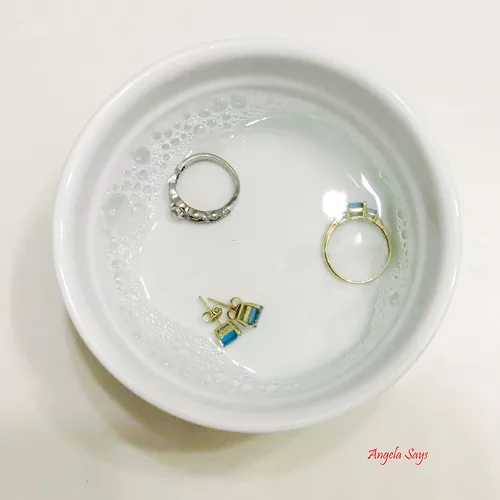



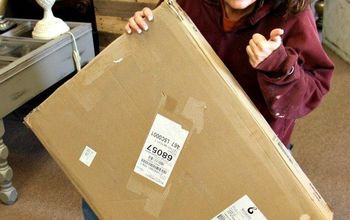
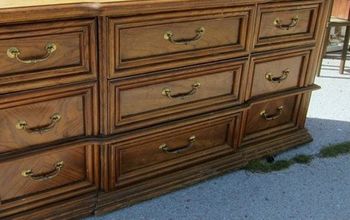



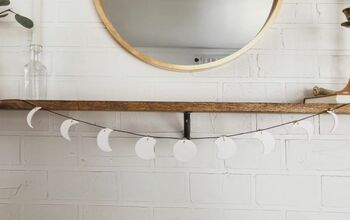
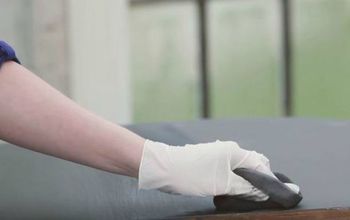
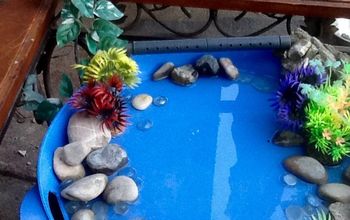


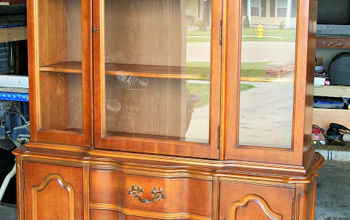




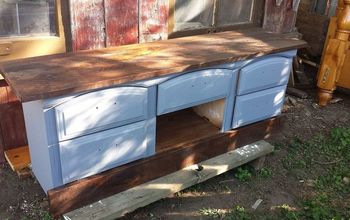
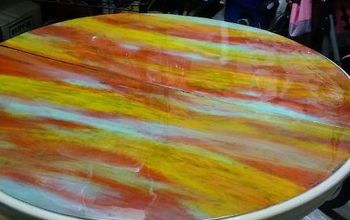






Frequently asked questions
Have a question about this project?